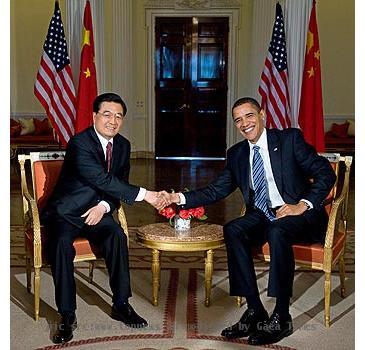China earthquake awakens new fears for students’ safety despite push for stronger schools
By Cara Anna, APTuesday, April 20, 2010
China quake awakens new fears for school safety
BEIJING — Last week’s earthquake in western China destroyed or left in critical condition more than two-thirds of the schools at the center of the disaster, bringing fresh fears two years after an even larger quake left thousands of students dead.
The government last year launched a vast project to inspect and strengthen schools across the country, and about 70,000 of them need work to be made quake-proof, a top education official indicated last month.
But some people, including students who survived last week’s quake in Yushu county, have angrily asked why schools in the remote Tibetan community hadn’t been fixed already. The quake’s overall death toll rose to 2,064 Tuesday.
“If every year half the money spent on cars, eating, drinking and traveling overseas were saved and spent on strengthening rural buildings, in a single year the buildings of millions of people could be made more earthquake-proof,” a former top engineer for the China Earthquake Administration, Wang Zifa, wrote on his blog Saturday in a dig at officials’ spending.
His post made a point of saying “especially schools.”
The image of collapsed schools and the phrase “tofu construction” were seared into China’s memory two years ago, when more than 5,000 students were killed in a massive earthquake in the southwestern province of Sichuan. The deaths deeply touched Chinese, many of whom under government policy can only have one child.
The central government has tried to respond to the urgency to fix schools with its three-year inspection and strengthening plan, but one international quake engineering expert warned that such work could take far longer.
Another quake-prone area, California, passed a law in 1933 to make schools quake-proof, and work still hasn’t finished, said Tom Tobin, president-elect of the Earthquake Engineering Research Institute based there.
At least 103 students were killed last week, with more than 700 hurt or missing, the Qinghai provincial government has said. In Yushu county, 26 percent of school buildings collapsed and another 44 percent were left in critical condition, according to the provincial disaster relief headquarters.
The sad state of the area’s schools was known before the quake. One of China’s best-known philanthropists donated dozens of schools to the region in recent years after being moved by a TV show about the area.
Of the 11 schools Chen Guangbiao donated in Yushu county, all are safe, the director of the county education bureau, Ma La, told The Associated Press on Monday.
Lots of schools in Yushu are simple and crude, Chen told reporters last week as he flew to the quake-hit region with aid. “I estimate that in a magnitude-4 earthquake all could collapse.”
China has tens of thousands of schools that need attention.
Deciding which schools to work on first isn’t easy, Tobin said.
He laid out a rough list of factors: First, how active the region’s quake faults are. Second, how close schools are to the fault. Third, how vulnerable the building is. And finally, how many students are in the school.
“It’s not easy, it’s not mathematically rigorous, it takes a lot of judgment,” he said. “But you’re going to be wrong, because the next quake is going to be a surprise.”
Almost a fifth of the 375,000 schools across China inspected last year need to be strengthened, Lu Xin, the education ministry official leading the three-year plan, told a work meeting March 4.
Construction last year to strengthen the problem schools was more than construction on new schools in the two previous years combined, she said.
Lu urged more attention to areas that have more earthquakes, such as western China. “As far as the potential safety threats to schools, we cannot leave things to luck,” she said, according to a copy of the speech posted on the ministry’s website.
Less than three weeks after she spoke — and just days before the earthquake — the Qinghai provincial government set up a special working group to speed up funding for strengthening schools in Tibetan areas, which would include Yushu.
“Unfortunately, precisely where the next earthquake will strike cannot be predicted, which makes it difficult to target resources most effectively, and tragedies like Yushu may still occur while the program is under way,” said Robin Spence, former president of the European Association for Earthquake Engineering. He helped host a group of Chinese officials in late 2008 on a European visit to learn about quake safety.
Spence said it would be better to build a dedicated team to deal with the problem over a number of years, “rather than trying to do a mass-strengthening program which may again result in vulnerable schools.”
China has quotas in its three-year push, however: 30 percent of the work was to be completed last year, 60 percent this year and 100 percent next year.
Last July, Qinghai province announced its first 30 percent of strengthening work would start in five counties and one city, largely clustered near the provincial capital, Xining.
In Yushu county, a 12-hour drive from the capital, the government is now busy with another kind of construction — 22 temporary schools to help replace the ones that collapsed.
In its faxed statement on Monday, the Qinghai education department did not say when work on permanent schools would begin.
On Saturday, Yushu’s first temporary school started classes.
And on Sunday, President Hu Jintao stood before a classroom of local children, pointing out hopeful words on a blackboard:
“There will be new schools,” they chanted together. “There will be new homes.”
Associated Press researchers Xi Yue and Yu Bing contributed to this report.
Tags: Accidents, Asia, Beijing, Bing, China, East Asia, Education Issues, Europe, Greater China, Hu Jintao


